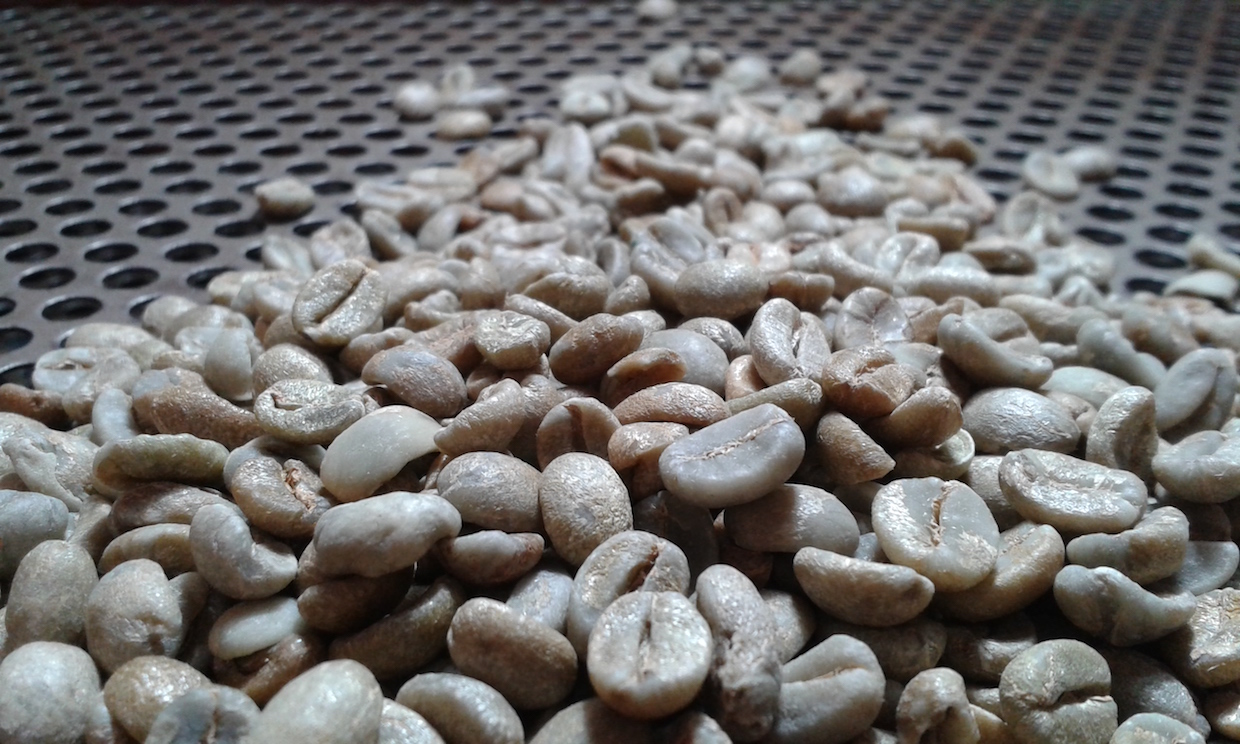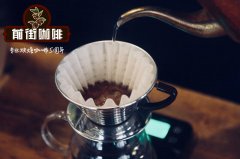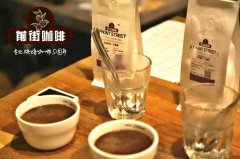COB: a complex evolutionary history of the official grading system for raw coffee beans in Brazil

Professional coffee knowledge exchange more coffee bean information please follow the coffee workshop (Wechat official account cafe_style)
Cob: the complex History of the Brazilian official Classification system
The Origin of cob
Since the beginning of trade, sensory analysis has provided an important mechanism for commodity pricing around the world. Color, smell and taste are some of the many attributes used to grade a wide range of food and agricultural products, and coffee beans are no exception.
Coffee was introduced in Brazil by Francisco de Mello in 1727 and became an important export crop after the Haitian revolution in the early 19th century. According to the most popular estimates, before the widespread burning of its coffee plantations, Haiti produced more than half the world's coffee.
This opens the door for Brazil to intervene as the world's leading coffee producer. In order to seek customs regulation and standardization, the Emperor Dom Pedro II of Brazil signed a bill in 1836 to regulate the world's first coffee classification system, dividing green coffee into three categories: first, second and other three categories. The law judges and describes coffee beans only on the basis of unpleasant characteristics, or what we call defects today.
Coffee_cupping
In the decades that followed, Brazilian coffee beans were often graded and named nationally and internationally according to the name of their export port, such as Santos, Rio or San Espinito beans. Most of this nomenclature continues to this day, and the co-designation of Santos in Brazil is a good example.
By 1910, warehouses and ports used a standardized cupping evaluation system, and by 1917, the official Santos Coffee Stock Exchange began to grade coffee through cupping.
For decades, the system has been organically developed as an official Brazilian classification ("Brazilian official Classification", or cob) through word of mouth among warehouses, traders and cups.
In 1949, the Brazilian government promulgated the first national coffee grading regulation, and the federal government finally formally formulated the cob agreement in 2002.
Roasted_coffee
Due to long and diverse developments throughout the history of the country, cupping protocols and methods are still vague in some areas, but the cob system does outline the precise code for green coffee classification-focusing on the defects of coffee beans. It is related to the quality of the cup. There are also standards specific to Lobuta Conilon cupping and grading.
Arab Cup cb Cup
The protocol identifies many of the characteristics of coffee grading, which are studied and calibrated by trained cups. The purpose of the cob approach is similar to the Green Coffee quality Standard of the Special Coffee Association (sca), while covering a wider range of overall quality, making it historically more suitable for commodity markets than professional markets.
Here, I'll try to outline the main cob levels and compare them using some sca terms:
The Estradament Mole is "strictly soft" (85 +): clean, highly sweet, pleasant, balanced, complex; no rough; no strange taste.
Moles "soft" (80 to 84): clean, moderately sweet, pleasant, unbalanced than "strictly soft"; no strange taste, but some immature beans caused by roughness are tolerated by some cups.
Apenas moles are "just soft" (75 to 79): beans are still thought to contain positive quality attributes; slightly unbalanced; low sweetness, less complexity, short aftertaste, slightly rough, and no strange taste.
Duro "hard" (68 to 74): excellent pollution; immature beans are very eye-catching, but without strange taste and bad fermentation.
Riado (67 -): significant imbalance, no complexity, unpleasant taste, degraded or bad fermented taste begins to appear in the cup; the presence of medicinal flavor.
Continuing to lower the rating standard, the sca standard no longer provides a useful comparison tool for the cob standard:
Rio oor: medicinal flavors are caused by the intermediate process of bean degradation; there is no positive taste or taste; bad fermentation, oxidation and mold are sometimes present in cups.
Rio Zona (oor): beans are completely degraded; unpleasant taste, bad fermentation, oxidation, mold, medicinal taste similar to iodine or decay exists.
Some of the terms used to define cob levels are outdated and are characterized by the common characteristics of beans grown in coffee, until the mid-20th century, when Brazil produced only natural coffee.
Jonas Ferraresso
Jonas Ferrasso baked coffee for evaluation.
For example, the features of Rio are named after the coffee harvested in the state of Rio de Janeiro at that time. Because the coffee harvested in the Zonadamata region more than half a century ago is of low quality, these beans are called Rio Sona. Today, all established growing areas in Brazil are harvesting high-quality coffee.
Steps in the post-cob cup agreement
Beans should be lightly roasted to a similar "urban" level.
Compared with sca, these wear particles are slightly rougher.
Seven 150 ml cups are placed and archived for 7 to 10 grams of ground baked beans.
The hot water is poured on the ground.
When the coffee is warm, cupper begins to drink and score.
Another Brazilian Protocol
In 2001, a new agreement, called pqc, was developed in cooperation with the Brazilian Coffee Industry Association (abic), which is more accurate and quantitative. Today's pqc is most commonly used to pack coffee.
With the great improvement in the quality of Brazilian green coffee, the strengthening of the Brazilian specialty coffee market, and the inaccurate historical agreement established by cob for cupping specialty coffee beans, many cups in Brazil are now often included in the sca evaluation criteria.
Today, however, cob reflects the most widely used export and trade language in Brazilian coffee warehouses, as well as the long and fascinating history of the Brazilian coffee industry.
END
Important Notice :
前街咖啡 FrontStreet Coffee has moved to new addredd:
FrontStreet Coffee Address: 315,Donghua East Road,GuangZhou
Tel:020 38364473
- Prev

The first COE in El Salvador, the first Kilimanjaro Manor, introduces the varieties planted in El Salvador.
Professional coffee knowledge exchange more coffee bean information please pay attention to the coffee workshop (Wechat official account cafe_style) Saguo coffee fruit is only harvested once a year, mostly concentrated in November to February next year, more than 60% of the varieties are bourbon strains, especially, Saguo is the most important country growing Pacas and Pacamara. Besides, sa
- Next

The synonym of Ethiopian boutique coffee-- Aricha G1
Professional coffee knowledge exchange more coffee bean information please follow coffee workshop (Wechat official account cafe_style) Ethiopia Yegashefi Aricha Solar processing Plant: Korbel Arijia processing Plant (Kebel Aricha) operator: Surafel Birhanu production area: Yegashefi District, Gaideo area (Gedeo Zone), about 4 km above sea level from the town of Yegashefi
Related
- Detailed explanation of Jadeite planting Land in Panamanian Jadeite Manor introduction to the grading system of Jadeite competitive bidding, Red bid, Green bid and Rose Summer
- Story of Coffee planting in Brenka region of Costa Rica Stonehenge Manor anaerobic heavy honey treatment of flavor mouth
- What's on the barrel of Blue Mountain Coffee beans?
- Can American coffee also pull flowers? How to use hot American style to pull out a good-looking pattern?
- Can you make a cold extract with coffee beans? What is the right proportion for cold-extracted coffee formula?
- Indonesian PWN Gold Mandrine Coffee Origin Features Flavor How to Chong? Mandolin coffee is American.
- A brief introduction to the flavor characteristics of Brazilian yellow bourbon coffee beans
- What is the effect of different water quality on the flavor of cold-extracted coffee? What kind of water is best for brewing coffee?
- Why do you think of Rose Summer whenever you mention Panamanian coffee?
- Introduction to the characteristics of authentic blue mountain coffee bean producing areas? What is the CIB Coffee Authority in Jamaica?

